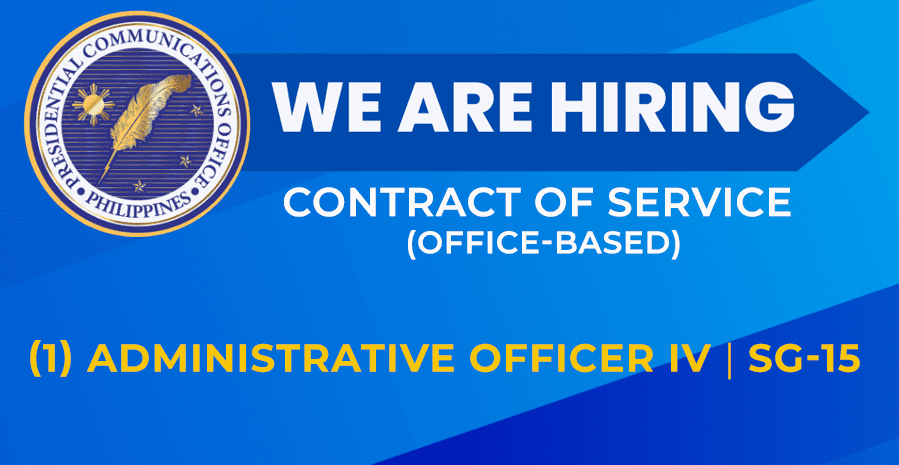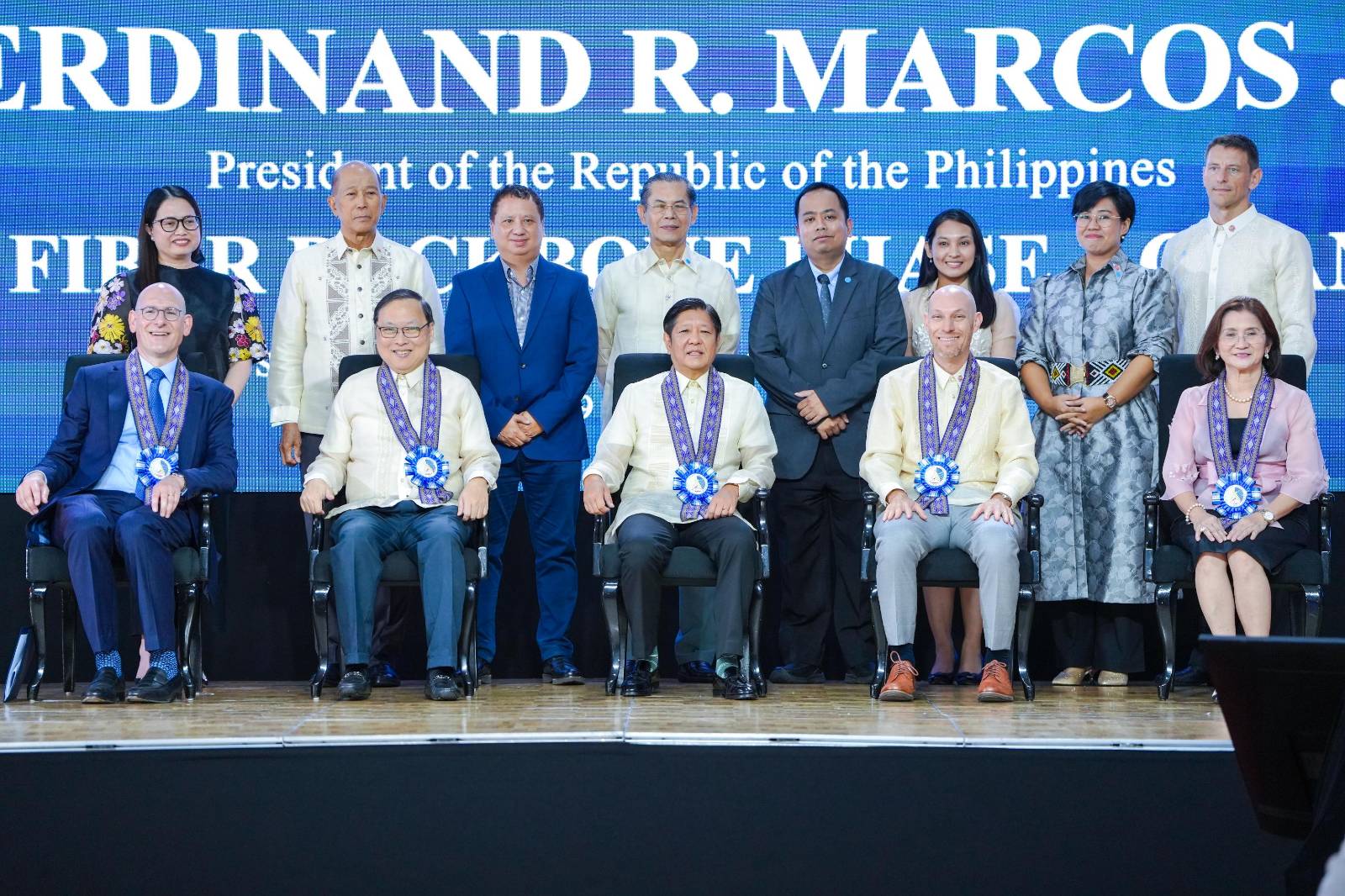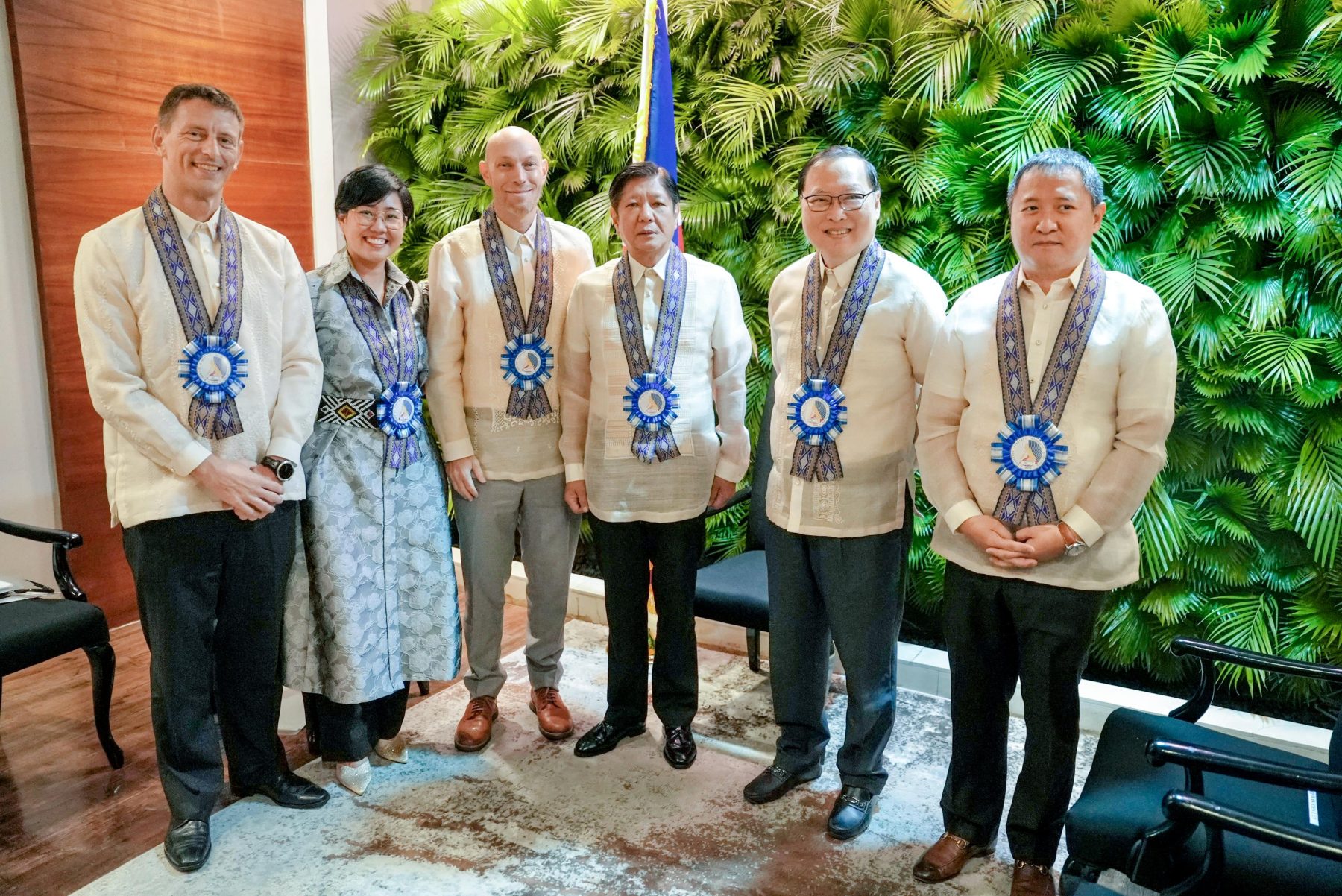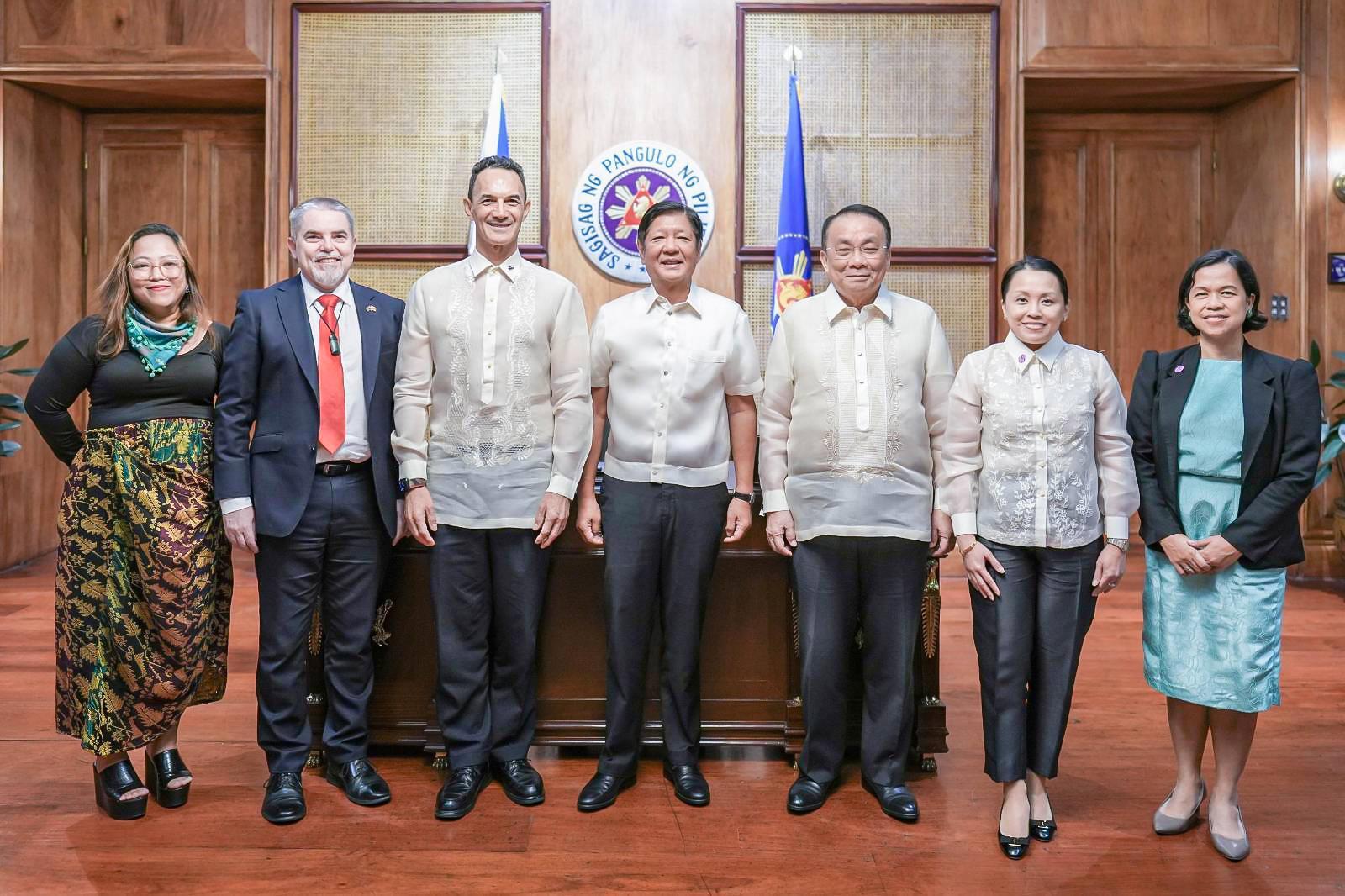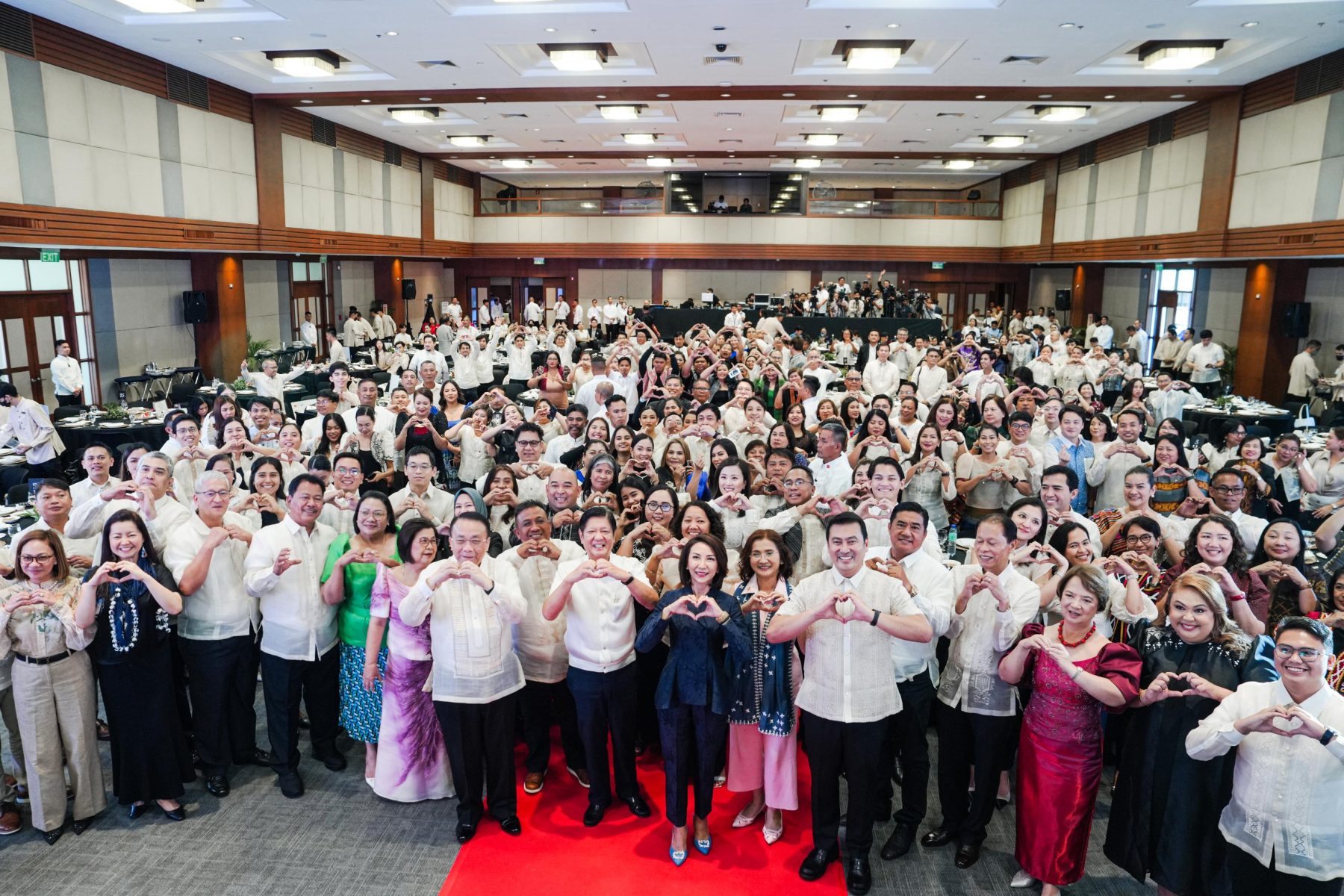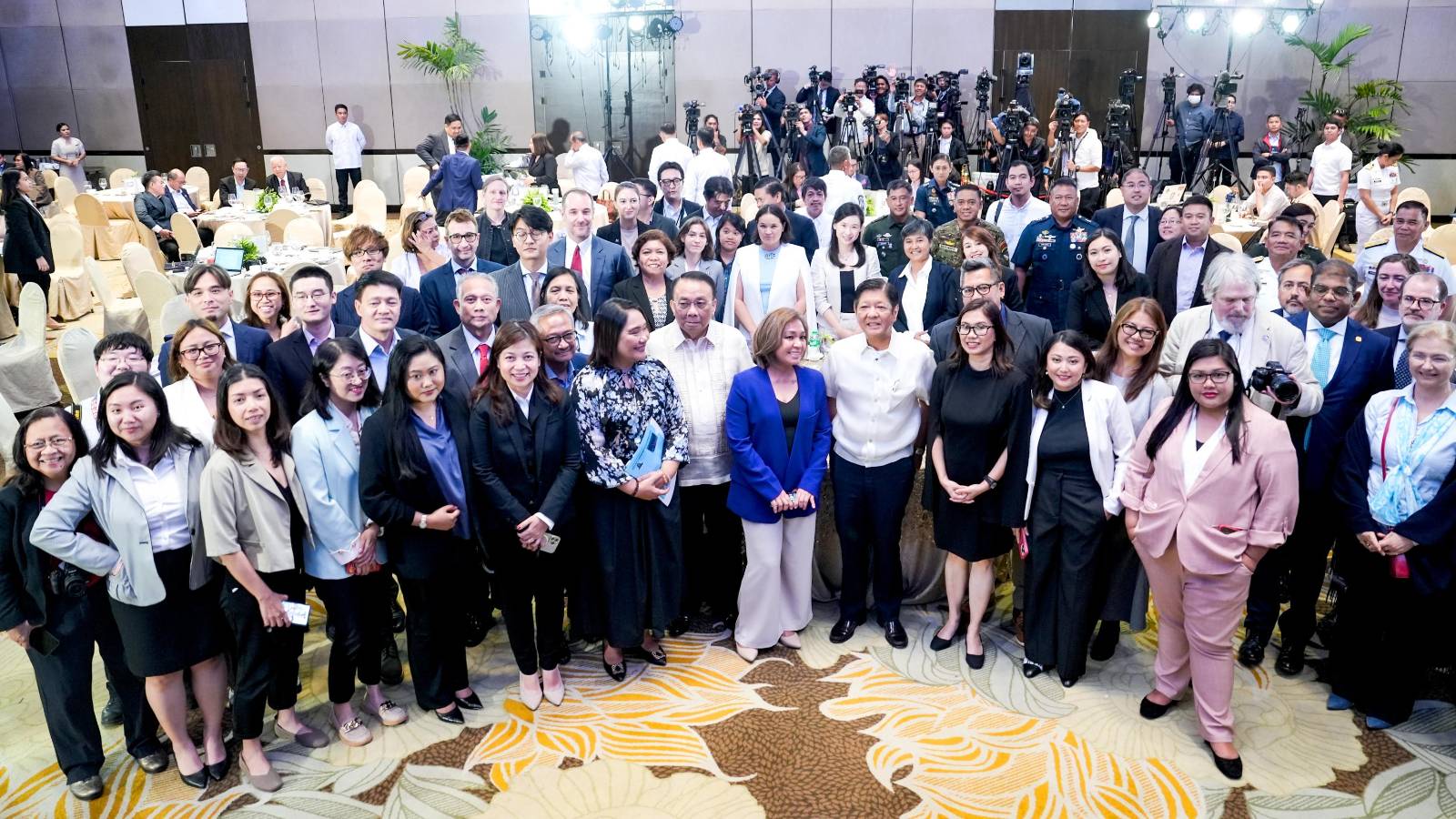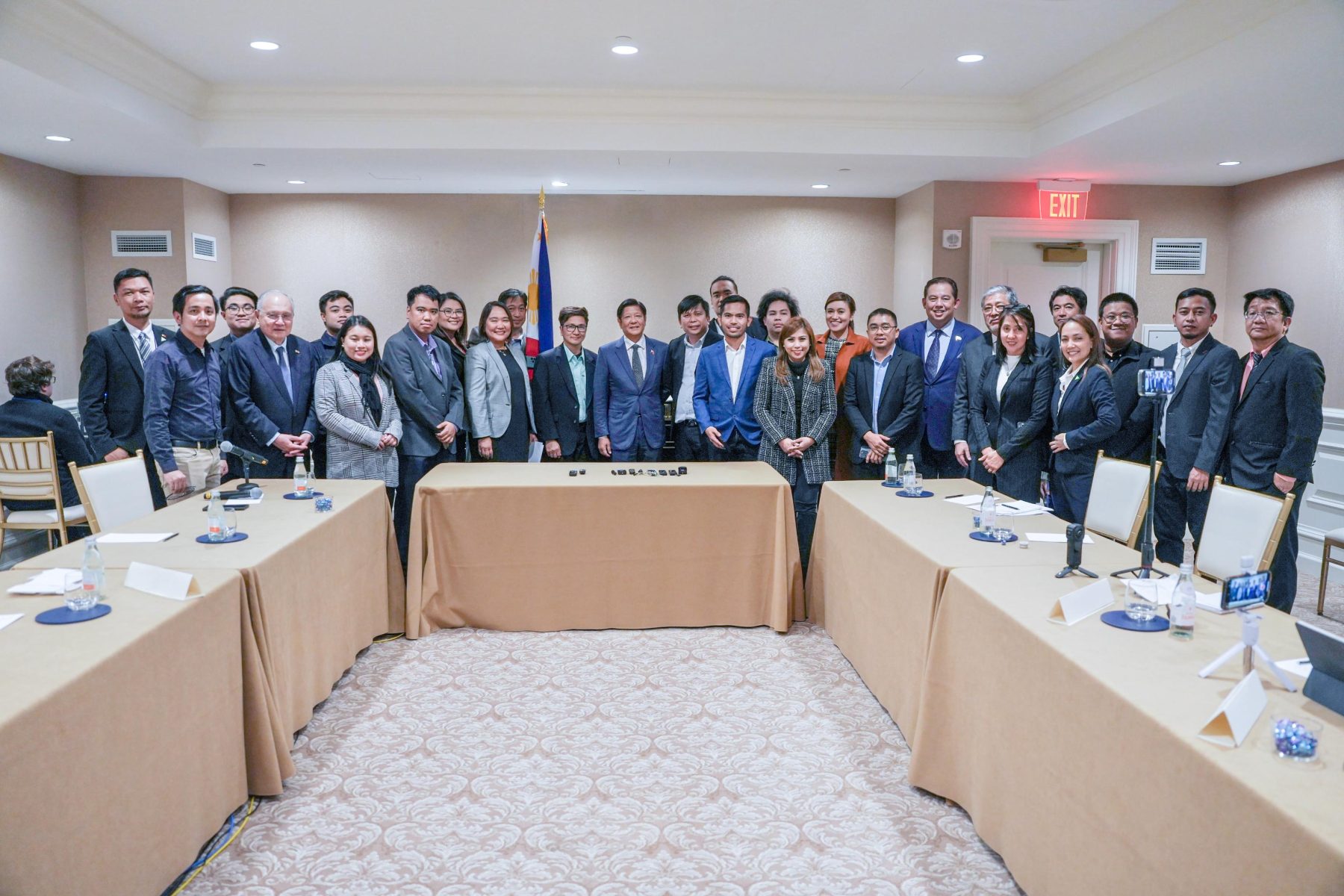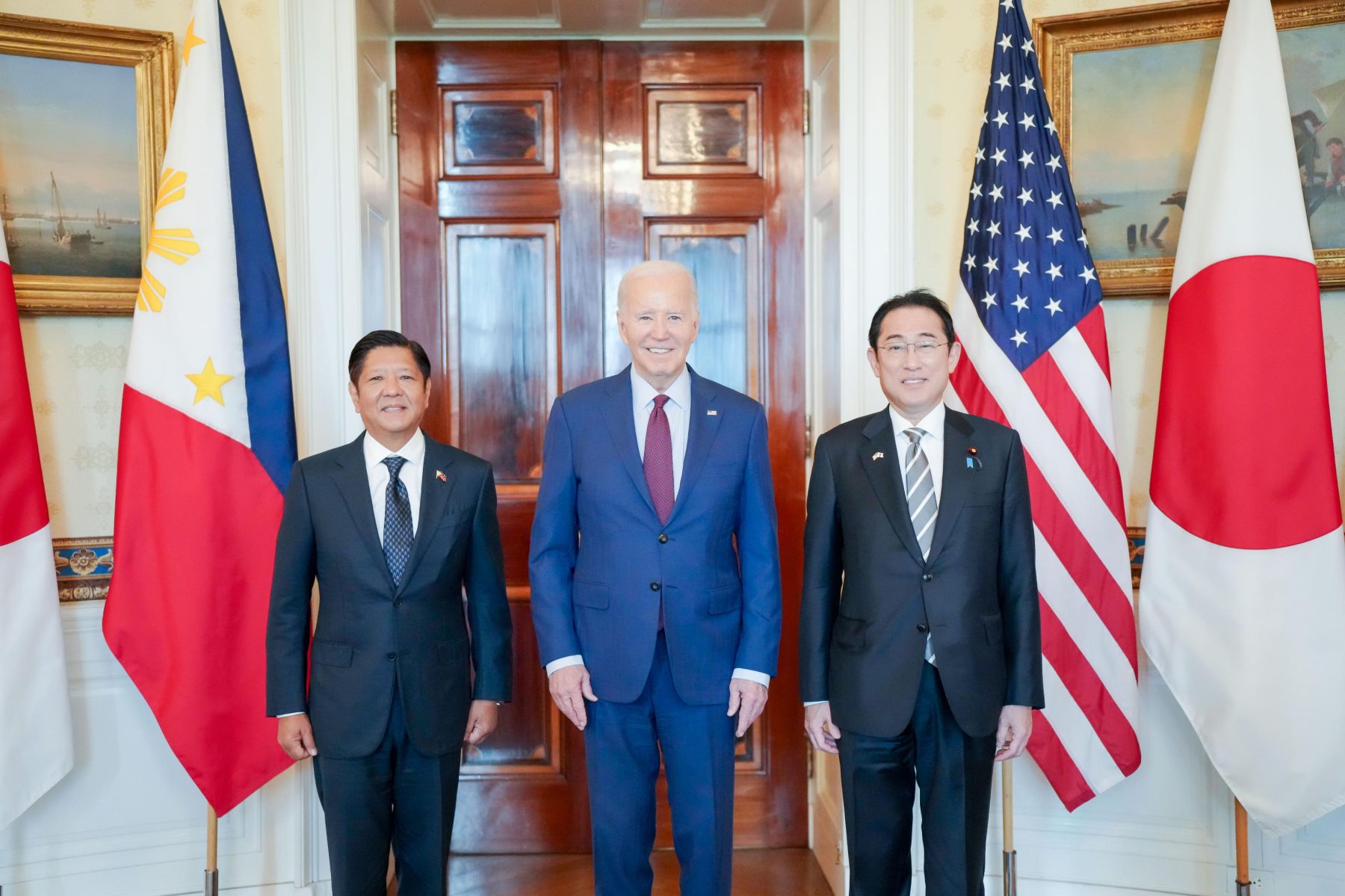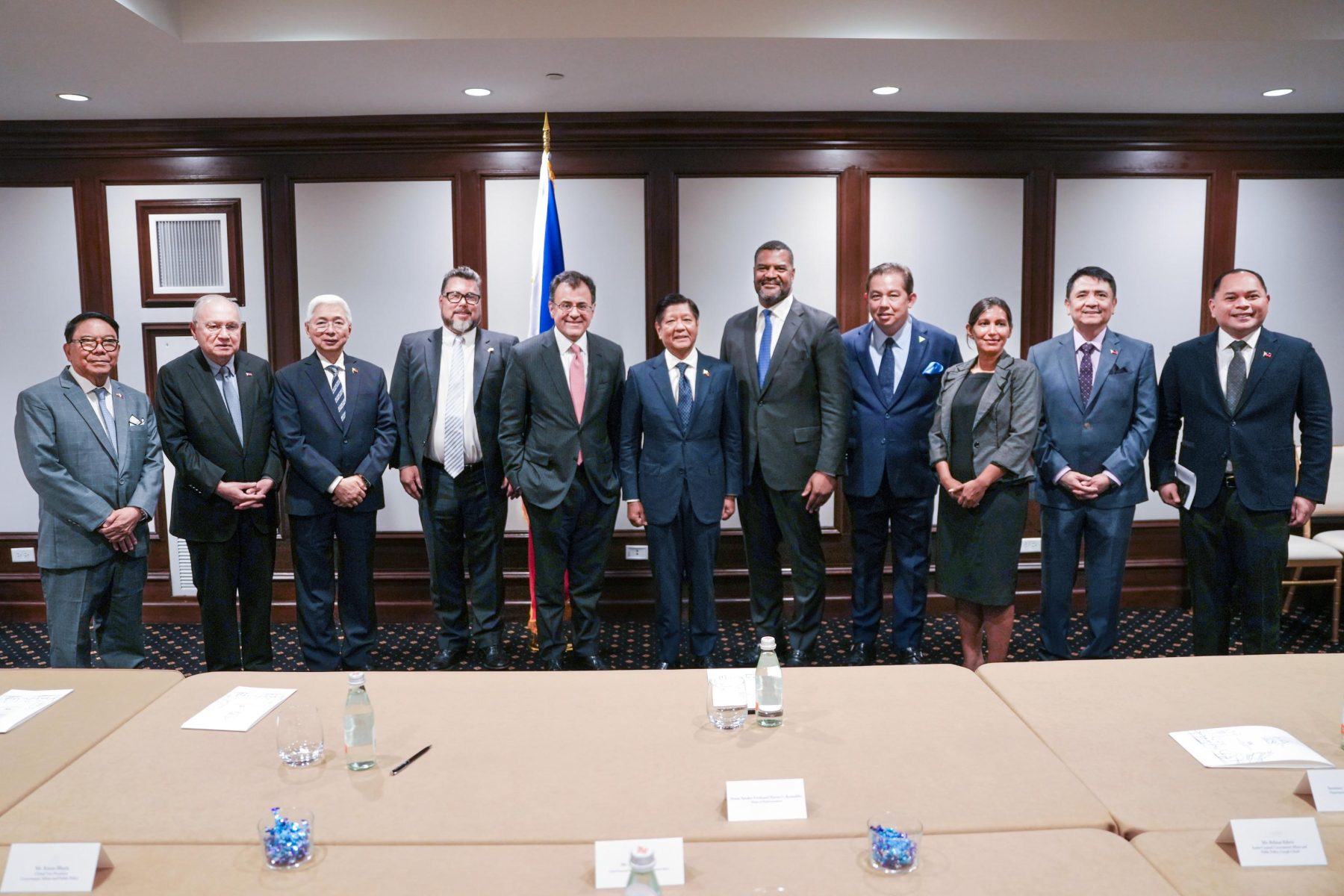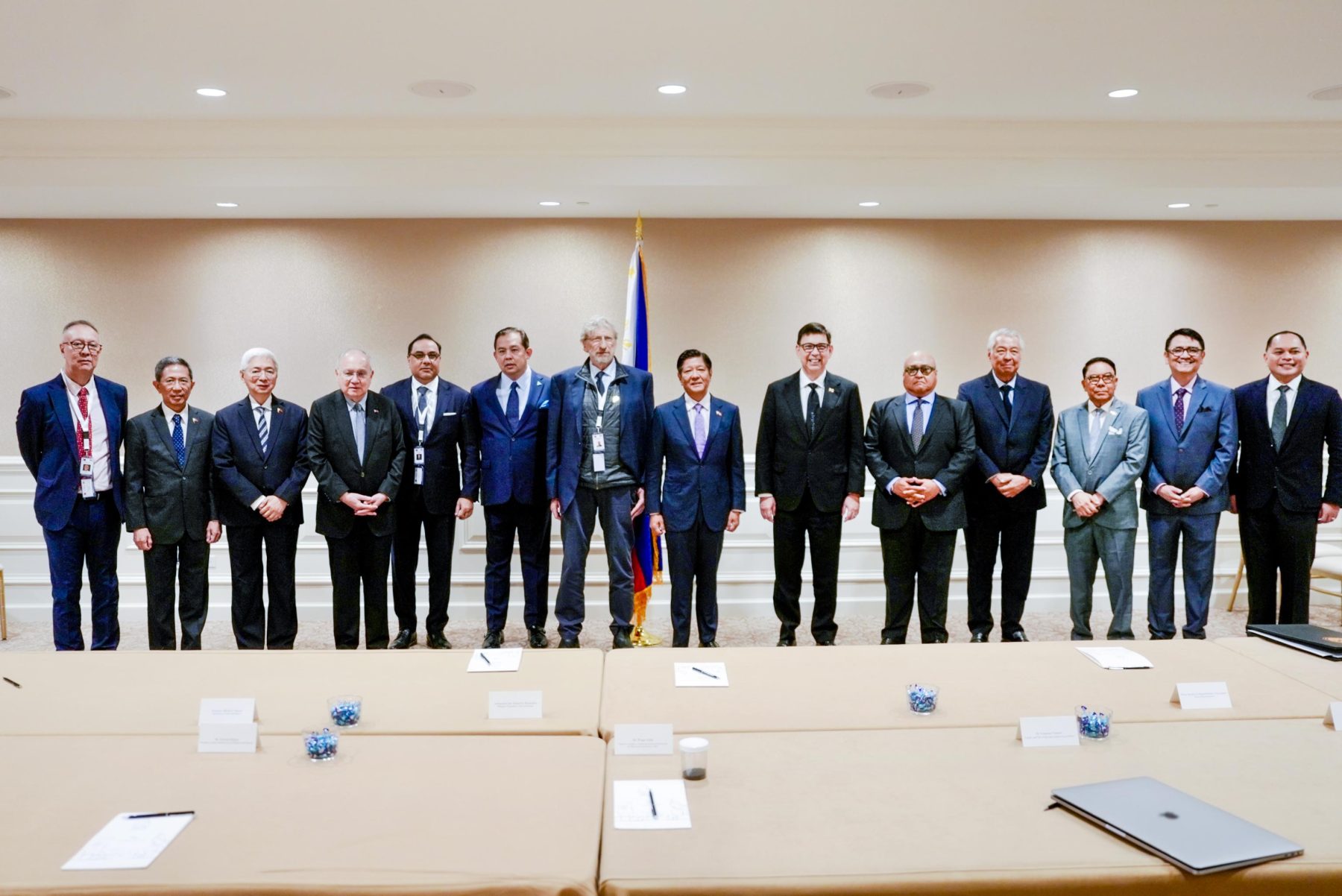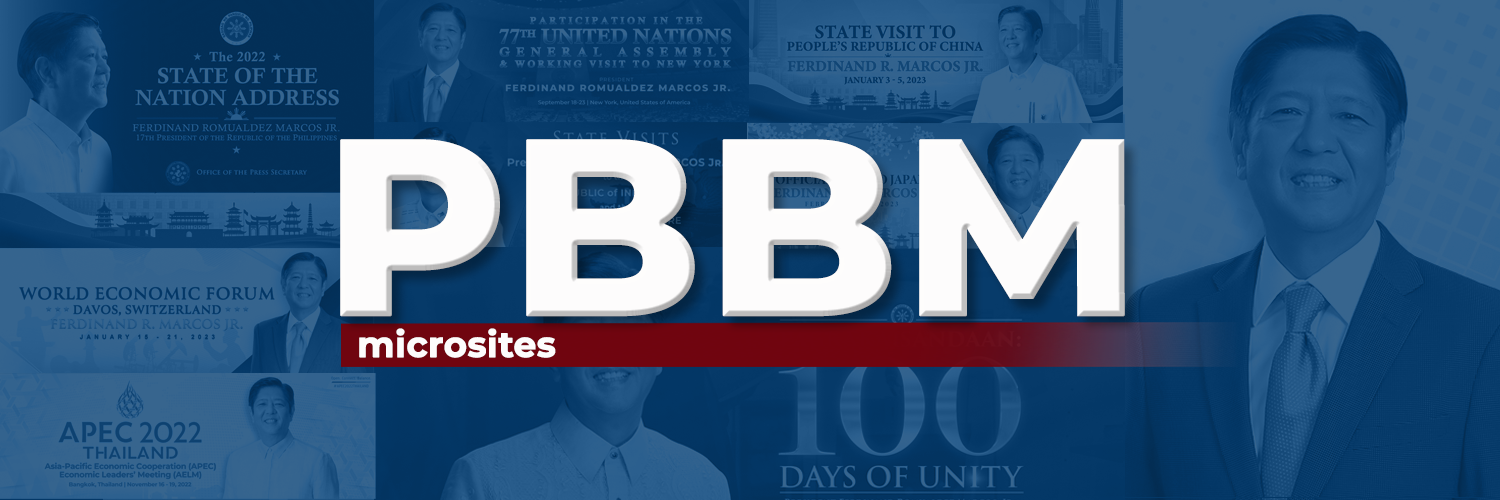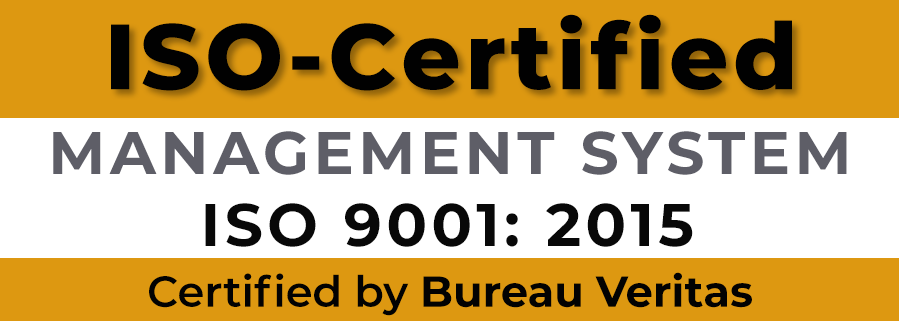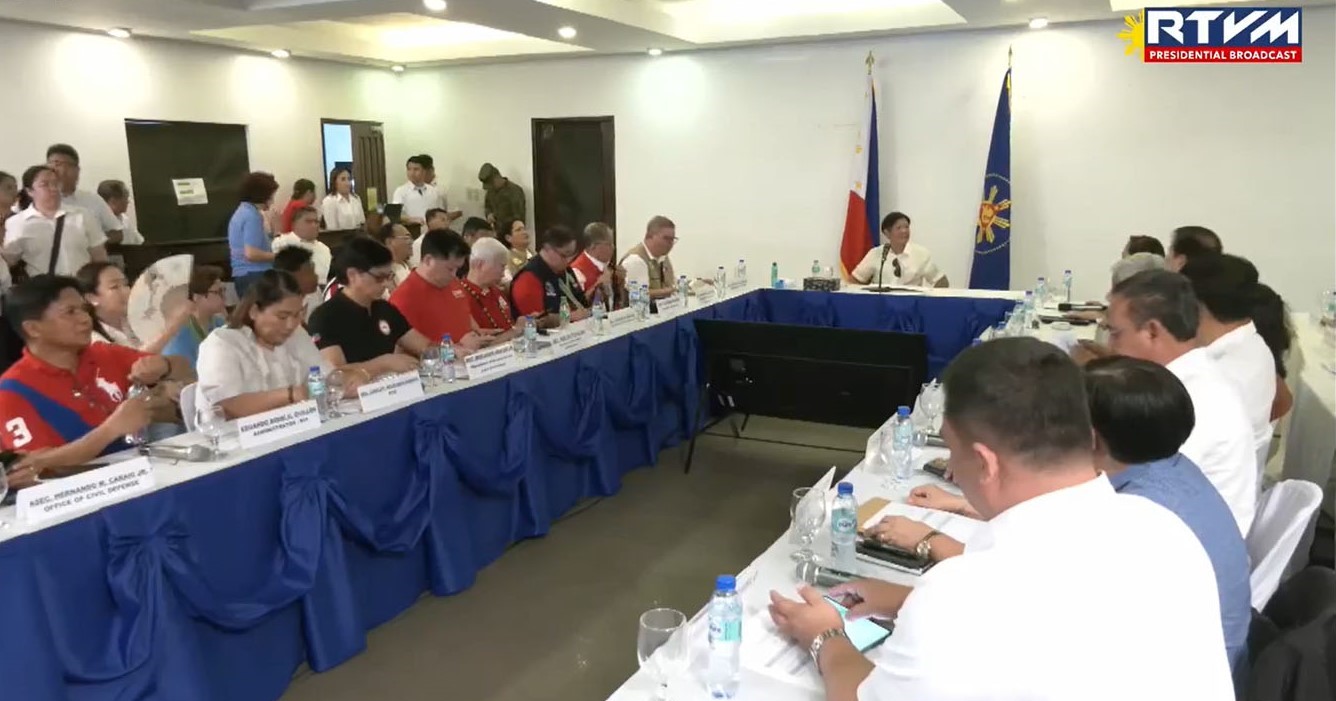September 09, 2015 – News Releases
 |
| 09 September 2015 |
APEC NEWS RELEASES
|
|
|
| Philippine structural reform requires interagency coordination, says official |
| (CEBU CITY, Cebu) Achieving an ideal ease of doing business structure in the country will take time and it needs cooperation among government agencies, an economic planning official said.
APEC ministers agreed on Tuesday to remove impediments on the ease of doing business (EoDB) to trade and commerce by lowering registration and trade actions costs in the APEC region through targeted and tangible programs. In a press conference at Radisson Blu Hotel at the conclusion of the two-day meeting on structural reforms, NEDA Deputy Director General Emmanuel Esguerra said there has been some progress in the Philippines in terms of improving regulatory framework but there is a lot of work ahead. “Certainly regulation and regulatory reform, particularly structural reform, requires a whole lot of government approach,” he said. “We need to do a better job of interagency coordination. Of course structural reforms, as we have been saying, is not a one-off process. It is an activity, an undertaking that requires some period of time to be able to yield results.” He said that aside from interagency coordination, establishing a coherent set of policies guided by an overarching vision is also very important. At the end of the discussion on structural reforms, the ministers announced in a statement that they agreed to recommend to APEC economic leaders the new aspirational goal of 10-percent improvement by 2018 in the existing five priority areas. These areas include starting a business, dealing with construction permits, trading across borders, getting credit, and enforcing contracts. The ministers will also endorse to the leaders the APEC EoDB Action Plan 2016-2018 when they meet in Manila in November. They also instructed the economic committee to draft and utilize the APEC EoDB Implementation Plan to guide capacity building over the next three years. APEC member economies met in Cebu for the APEC Structural Reforms Ministerial Meeting to advance the economic bloc’s reform agenda, find solution to avoid the middle income trap and continue the structural reform work program until Year 2020. PND (as) |
|
|
| APEC targets 10% improvement in ease of doing business in Asia-Pacific region |
| (CEBU CITY, Cebu) Ministers from 21 member-economies of the Asia-Pacific Economic Cooperation (APEC) have agreed to undertake reforms to improve the ease of doing business in the Asia-Pacific by 10 percent between 2016 to 2018, paving the way for greater economic activity in the region.
In a statement issued at the end of the Structural Reform Ministerial Meeting Tuesday held here, the ministers said they will recommend to APEC Economic Leaders the 10-percent improvement goal by 2018, covering five priority areas for regulatory reform under the APEC Ease of Doing Business (EoDB) Action Plan. These priority areas include starting a business, dealing with construction permits, trading across borders, getting credit and enforcing contracts. “This target aims to reaffirm APEC’s strong commitment to implement regulatory reforms to improve the business environment,” they said. The ministers also recognized that EoDB reforms remain a high priority in APEC economies, and capacity building and technical assistance could help economies overcome constraints and challenges implementing such reforms. APEC Secretariat Executive Director Dr. Allan E. Bollard believes that the 10-percent goal is reasonable considering the short timeframe. “If we achieved this, or over achieve it, then we expect to see costs coming down for firms, prices coming down for consumers, and more exports,” Bollard said. “And if we can get right in terms of the inclusive growth focus on these regulatory reforms, we should expect more women in business, more MSMEs (micro, small and medium enterprises) working in the international arena and trading,” he added. The APEC Policy Support Unit (PSU) conducted annual interim assessments that indicated APEC economies made continuous progress in the five areas from 2010 to 2014. The 12.7-percent improvement during 2010-2014 may indicate that APEC may not be able to achieve the aspirational target of 25 percent by the end of 2015. However, it still constitutes a significant progress towards producing tangible results while taking into account the challenging environment in which reforms were implemented. “We note the uncertainty that continues to cloud the global economic scene. Although there are signs of recovery, the residual effects of the global financial crisis are still evident in many economies, even as new forms of trade and investment protectionism are on the rise,” the ministers said in the statement. (PNA) (ldv) |
|
|
| Palace official acknowledges efforts of HPG, MMDA to ease traffic congestion |
| Cabinet Secretary Jose Rene Almendras on Wednesday acknowledged the “hard work and continuous efforts” of the Philippine National Police – Highway Patrol Group and the Metropolitan Manila Development Authority for working together to address the traffic situation in the metropolis. In a statement, Almendras said the complex problem “requires the ‘whole of government’ approach”, which also involves other agencies such as the Department of Public Works and Highways, Department of Interior and Local Government, Department of Transportation and Communications, Land Transportation Franchising and Regulatory Board, and Land Transportation Office.
“The past two days are proof that the initial steps being taken to ease the traffic situation were effective, and government will continue to strive to improve our interaction and interoperability among concerned government agencies,” he said in the statement. The Cabinet Secretary also urged the public to follow traffic rules and regulations. “We continue to appeal to the public for their cooperation in following traffic rules and regulations that greatly impact on traffic flow and management,” he said. Almendras has been tasked by President Benigno S. Aquino III to coordinate with agencies to ease traffic congestion in Metro Manila, especially along the Epifanio de los Santos Avenue. PND (jm) |
|
|
| APEC members agree on renewed agenda for structural reform in next five years |
| (CEBU CITY, Cebu) Senior officials of member economies of the Asia-Pacific Economic Cooperation (APEC) set forth this week the Renewed APEC Agenda for Structural Reform (RAASR) 2016-2020 to meet the needs and priorities of the economic bloc in the next five years and beyond.
“We invite leaders of APEC economies leaders to jointly pledge to undertake robust, comprehensive and ambitious structural reforms to reduce inequality and stimulate growth in their economies,” APEC senior officials said in a statement issued on Tuesday after their two-day meeting on structural reform held here. They said they hope that each leader’s commitment could contribute to the APEC’s overarching goal to promote balanced, inclusive, sustainable, innovative, and secured growth. This will be done through the following guidelines: having more open, transparent and competitive markets; deeper participation of micro, small and medium enterprises (MSMEs), women, youth and people with disabilities as well as older workers; and putting up sustainable solid policies that enhance economic resiliency and growth. Under the RAASR, each economy will develop an individual action plan, setting forth its structural reform priorities, objectives and policies starting 2016 until 2020. “The inclusion of quantitative and qualitative indicators to demonstrate how progress will be monitored is strongly encouraged,” the senior officials said in the statement. Economies are also encouraged to nominate reform action under all guidelines and across all sectors, particularly services, to ensure individual action plans are suitably ambitious and comprehensive. The APEC officials said they are carrying out the RAASR as a result of the Asia-Pacific region’s slower global economic growth, slower potential growth, fiscal consolidation, and relatively weak private sector investment. “In such environment, structural reforms are critical to boost growth through increasing productivity and addressing APEC’s long-term development objectives of graduating to high income status and continuing improvement in living standards despite the ageing populations in some economies,” they said in the statement. PND (as) |
|
|
| Malacañang seeks public understanding on heavy traffic caused by flash floods |
| Communication Secretary Herminio Coloma, Jr. has sought the understanding of the public who were caught in the heavy traffic caused by flash floods following heavy rains on Tuesday night.
“Government’s efforts to improve traffic flow along EDSA (Epifanio de los Santos Avenue) and major thoroughfares were greatly hindered last night by heavy rains and flash floods that were experienced during the rush hour of homeward-bound commuting. These slowed down the movement of vehicles and resulted in gridlock in flooded areas with stalled vehicles. It was only past 11 p.m. when the flash floods subsided and normal flow of vehicles resumed,” Secretary Coloma said in a statement issued on Wednesday. “We understand the plight of many who were stranded and delayed considerably in reaching their homes and destinations and we seek their kind understanding,” he added. Coloma said that according to Secretary Rogelio Singson, the Department of Public Works and Highways is working on clearing and expanding the holding capacity of drainage systems, while Highway Patrol Group (HPG) Director Chief Superintendent Arnold Gunnacao said that HPG personnel diverted traffic on flooded streets to alternate routes. The Palace official also said that Metro Manila Development Authority Chairman Francis Tolentino deployed traffic enforcers even past midnight to assist in normalizing the traffic flow. PND (jm) |
|
|
| APEC wants small businesses ‘front and center’ in global trade |
| (CEBU CITY, Cebu) They are said to be responsible for driving innovation and competition in many economic sectors. This is why a plan has been crafted to put micro, small and medium enterprises (MSMEs) at the “front and center” of regional and global trade by making them direct exporters of goods and services.
This policy recommendation is part of the draft implementation plan for the Boracay Action Agenda to Globalize MSMEs (BAA-MSME) introduced at the Asia-Pacific Economic Cooperation (APEC) 3rd Senior Officials’ Meeting held here. This plan is called the APEC Implementation Plan for the BAA-MSME and it seeks to identify policies and reforms that would boost MSME integration in international trade. According to the plan, APEC 2015’s agenda to make small businesses “front and center” in international trade can be achieved by making them part of the global value chain, that is, part of the end-to-end production of goods and services — from conception to usage. The plan is a “living document”, according to Department of Trade and Industry Assistant Secretary Ceferino Rodolfo, as this would guide officials in the implementation of BAA-MSME, which was endorsed by APEC ministers during the APEC Ministerial Roundtable in the island resort of Boracay earlier this year. The proposal further demands that MSMEs should be afforded better access to information to open them up to global market trends and finance opportunities. Micro, small and medium enterprises are businesses whose personnel numbers fall below certain limits. They are generally defined as one with at least 100 and fewer than 500 employees. Today, statistics show that MSMEs outnumber large companies by a wide margin. But why should MSMEs be integrated in global trade? Dean of the University of the Philippines School of Economics, Ramon Clarete, explained that such a move would bring “more exports, diversified products, and increased productivity, and increased firm competitiveness” in the Philippine economy. “Like many developing countries, the Philippines will need to work to achieve the integration of MSMEs in global trade,” said Clarete. He noted that the meetings held here led to “specific, concrete, and practical initiatives” that member economies could implement to provide their MSME sector more opportunities to participate in the global trade. Clarete explained that an MSME sector with a wider scope would bring a bigger variety of products, raise the average productivity of a country, and intensify competition in the global market. He also said these would lower the average cost of products. A modeling study published by the Asian Development Bank (ADB) on MSMEs’ effect in the overall economic welfare agreed with Clarete’s analysis. The ADB study said that having more MSMEs in the export market increases the opportunities for economic growth. Ateneo de Manila University Economics professor, Dr. Alvin Ang, meanwhile, stressed that increased competitiveness in the market and lower prices of goods are long-term results of policy change. Ang, currently a board member of the Philippine Economics Society, said that in the short term, there is no immediate difference because the MSMEs need to participate first, and they have to improve what they produce. “They have to improve their cash flow,” he said, adding that the earliest changes could be felt within six months after the implementation of policy reforms. Ang said the Philippines has not been remiss in crafting policies encouraging MSMEs to participate more in the economy. “The challenge is that MSMEs are not doing their part,” he pointed out. “They are not participating. They are not producing new products. They are not inventing. We need something new in the market,” he said. (acg) |
|
|
| President Aquino lists major infrastructure projects in Misamis Occidental |
| (OZAMIZ CITY, Misamis Occidental) President Benigno S. Aquino III on Wednesday enumerated the government’s major infrastructure projects intended to improve accessibility, create jobs, and boost economic activity in the province of Misamis Occidental.
President Aquino visited Misamis Occidental on Wednesday morning to update its residents on the infrastructure projects in the province, including the P5.1-billion Panguil Bay Bridge project. In his speech, the President said the National Economic and Development Authority Board has already approved the Panguil Bay Bridge project that would connect Tangub City in Misamis Occidental to the municipality of Tubod in Lanao del Norte province. President Aquino said that once completed, the proposed 3.6-kilometer two-lane bridge would reduce travel time between the two places from 2.5 hours to only seven minutes. “Sa proyekto pong ito, magiging mas konektado ang mga bayan ng Ozamiz, Tangub, Oroquieta, sa mga sentro gaya ng Cagayan de Oro at Iligan, at maging sa ibang bahagi ng Zamboanga Peninsula,” he said. “Isipin na rin po ninyo: Kapag nakumpleto na ang pagpapagawa ng mga daungan sa Plaridel, Jimenez, Oroquieta, at ang modernisasyon sa paliparan at daungan sa Ozamiz, asahan ninyong bibilis pa ang daloy ng komersiyo, transportasyon, at turismo sa buong Misamis Occidental, pati na rin sa inyo pong rehiyon,” he added. The President said the bridge and the other ongoing infrastructure projects in the province aim to enhance connectivity and spur economic growth in the region. It will also improve the lives of the people living in the area, he added. “Siyempre, ang dulot nito: Aarangkada pa hindi lang ang negosyo at mga serbisyo sa inyong lalawigan, kundi maging ang mismong kabuhayan at kalagayan ninyo,” he said. Aside from the Panguil Bay Bridge project, President Aquino also cited the improvement of a mountain road from Oroquieta to Calamba, which includes the rehabilitation of the Oroquieta City-Plaridel-Calamba-Sapang Dalaga Road. Other projects are the construction of the slope protection of Migcanaway Bridge 1 along the Ozamiz-Pagadian Road in Tangub City, the upgrading of the Bonifacio-Don Victoriano Road, and the rehabilitation of the Ozamiz City Coastal By-Pass Road.President Aquino also mentioned that the construction of roads aim to boost tourism in the province, particularly the Ozamiz-Clarin-Tangub-Bonifacio-Don Victoriano Agro-Eco-Tourism Hinterland Projects, the Sta. Maria Hoyohoy Road going to the Hoyohoy Highland Botanical Garden, and the Gandawan-Lake Duminagat Road. “Bukod pa sa mga nabanggit nating estruktura, ginagawa na rin ang Ozamiz City-Clarin Interior By-Pass Airport Link, na kapag natapos ay ibababa pa sa limang minuto ang dating dalawampung minutong biyahe papunta sa airport,” the Chief Executive said. President Aquino also cited the rehabilitation of the Tangub City–Cabangcalan–Manga–Bongabong Road leading to the Watershed Park in Tangub, and the Tangub Small Reservoir Irrigation Project. In his speech, President Aquino also noted that since 2011, the government’s budget for infrastructure projects in Misamis Occidental has already reached P7.24 billion. “Ngayon nga pong nasa huling bahagi na tayo ng ating panunungkulan, balak pa nating paspasan ang paghahatid ng kalinga at suporta hindi lang sa inyong bayan, kundi maging sa kalakhang Mindanao at sa buong bansa. Ang pangarap po kasi natin, ay ang makitang umuunlad ang buong Mindanao para masagad ninyo ang potensiyal nito bilang ‘Land of Promises Fulfilled’,” he said. The President however admitted that a lot of work still needs to be done. “Pero ang kaya nating ipatupad, tinutupad na natin; ang kayang itama, talagang itatama natin. Sa atin pong panig sa mabuting pamamahala: ang mga inisyatiba, nakaangkla sa pangangailangan, imbis na sa politika o palakasan,” he said. “Ang pag-unlad, nakabatay sa isang komprehensibo at pinag-aralang estratehiya. Ang resulta: Ang kaginhawaan, totoong abot-kamay, hindi lang ng iilan kundi ng mas nakararami, dahil sabay-sabay tayong nag-aambagan,” he added. From Misamis Occidental, President Aquino proceeded to Davao. PND (co) |
|
|
| Finance official underscores importance of implementing Cebu Action Plan |
| (LAPU-LAPU CITY, Cebu) A finance official on Wednesday underscored the importance of having coordinated efforts in implementing the Cebu Action Plan (CAP), once it is agreed upon by Asia-Pacific Economic Cooperation (APEC) ministers late this week.
Delegates to the APEC meeting threshed out the details of the Cebu Action Plan on Wednesday. The plan will be presented to APEC ministers on Friday for signing. Adoption of the CAP by APEC member economies is important because it could boost growth, shield the region from financial shocks, and prevent future financial crisis. “We must remember that APEC is the largest economic grouping in the whole world. APEC member economies account for 57 percent of world GDP (gross domestic product),” Finance Undersecretary Gil Beltran said during a press conference here. “They account for more than 54 percent inward FDI (foreign direct investment) and 56 percent of the outward FDI. And they also account for 39 percent the world’s population.” These economies also account for economic dynamism in the Asia-Pacific region, he said, noting that if the growth rates of the member economies are viewed as a whole, they double that of the world’s growth. “So, we are growing faster than the rest of the world,” Beltran said. The adoption of the policies contained in the CAP will enhance their resiliency and inclusivity and this will also be a big boon to the world economy as a whole, he said. This will also push growth rates up, and avoid the dampening impacts of disasters and volatilities, he added. Beltran noted that the region has had several crises in the past, and member economies have learned from these crises and are trying to adopt policies that would help them avoid future instability. Meanwhile, Director Fabier Roca Fabianis of Peru’s Ministry of Finance and the Economy, said they understand that the CAP will be the roadmap for the next 20 years for the APEC finance ministers to process. He said all the pillars of the CAP must be implemented, considering the unity of the APEC economies. Among the pillars of the CAP are financial integration, fiscal reforms and transparency, financial resiliency, and infrastructure development and financing. “We understand that not all APEC members are ready to implement in the short term but we must work with economies to try to implement this action plan, to work on the discussion on that instrument,” he said. Peru, which will host the APEC Summit next year, is planning a one-year, five-year and 10-year implementation strategy for CAP. Fabianis indicated his country’s commitment to implement or work on the Cebu Action Plan during their hosting. “We will work on that and we will select doable action for Peru’s hosting,” he said. Some 212 APEC delegates attending the meetings here in Lapu-Lapu City, will iron out the CAP before it is submitted to the ministers on Friday. For the meeting of chief executives officers, organizers expect 100 participants to attend the discussions. PND (as) |
|
|
| Services sector a game changer in APEC economies |
| (CEBU CITY, Cebu) The services sector can be a game changer, not only in domestic and regional development but also in member economies of the Asia-Pacific Economic Cooperation (APEC), business groups from the public and private sector across the Asia Pacific said at the culminating event of an APEC dialogue here Tuesday.
Delegates to the Regional Conference of Services Coalition thus urged the APEC to “take action to realize the transformative benefits” of this sector, which provides services ranging from restaurants, shipping, accounting, information technology, and entertainment, among other services-centered enterprises. According to the APEC Business Advisory Council (ABAC), these benefits can only be enjoyed by making the services sector more competitive, and competitiveness can be achieved with “structural reform in APEC economies”. “Competitive services help to create jobs, produce quality goods, widen choices for consumers, harness opportunities for businesses, improve living standards, and spur economic growth,” the ABAC said in a statement. Reforms should include addressing behind-the-border barriers, such as business registration procedures, the council said, adding that international trade negotiations alone will not be able to fix them. “Governments need to take unilateral action to encourage competitive services industries,” the ABAC said. Opening and facilitating trade and investments in the services sector have significantly benefited micro, small, and medium enterprises (MSMEs) seeking to enter global markets, it noted. Member of ABAC Hong Kong Anthony Nightingale also pointed out that an uncompetitive services sector means an uncompetitive manufacturing sector. This has led to lower exports and higher prices for consumers, he said. Representatives of both the private and public sectors meanwhile welcomed the development of an APEC Services Cooperation Framework, which APEC Leaders will consider at their annual summit scheduled in Manila on November 18 to 19. The framework would signal the importance of services to APEC member-economies and introduce an action plan for the next 10 years on improving services competitiveness. The ABAC and other businessmen also said engaging the business community is important in formulating meaningful domestic reforms. Government policies need to “embrace the new global worker”, said Guillermo Luz, lead coordinator for the private sector in the APEC National Organizing Council. The Regional Conferences of Services Coalition was held on the margins of the APEC Senior Officials’ Meeting and the APEC Structural Reform Ministerial Meeting here in Cebu City. While a non-binding formation, the APEC meetings are able to set domestic, regional, and industrial policies to achieve free and open trade and investment in the Asia Pacific. The APEC’s 21 member economies are Australia, Brunei, Canada, Chile, China, Hong Kong, Indonesia, Japan, South Korea, Malaysia, Mexico, New Zealand, Papua New Guinea, Peru, Philippines, Russia, Singapore, Taiwan, Thailand, the United States, and Vietnam. The APEC Leaders established the ABAC in 1995. This private sector body presents recommendations to APEC Leaders in an annual dialogue and advises APEC officials on business sector priorities and concerns. The ABAC meets four times per year, and ABAC representatives also attend Senior Officials’ Meetings, the Annual Ministerial Meeting, and the sectoral Ministerial Meetings. The ABAC comprises up to three senior business people from each APEC economy and the appointments are made by the Leader of the member economy concerned. The Chair of the ABAC comes from the economy that is hosting the APEC and therefore changes annually. The ABAC represents a diverse range of sectors and includes small and large enterprises. (acg) |
|
|
| APEC to facilitate cross-border flow of investments to limit effects of market volatilities |
| (LAPU-LAPU CITY, Cebu) Finance ministers and officials of the Asia-Pacific Economic Cooperation (APEC) are working on initiatives aimed at facilitating the cross-border flow of investments to mitigate the impact of market volatilities on member economies, as they finalize a roadmap for reforms for the region.
Finance Undersecretary Gil Beltran said during a press briefing here Wednesday that they have identified various measures to enhance financial resiliency, one of the pillars of the Cebu Action Plan (CAP). “If you look at many deliverables under this pillar, you will see that it will hasten the flow of investments across the economies,” he said. Beltran cited the Asia Region Funds Passport (ARFP), which will allow APEC economies to tap the excess savings of one economy and transform it into productive investments in another economy. The potential benefits of the passport include more choice for investors, lower fees, a more competitive Asian asset management industry, deeper financial markets and improved access to capital, and improved regulatory standards across the region. Beltran noted that the APEC is one of the regions with the highest level of savings in the world, accounting for a large percentage of foreign direct investments (FDIs) and investable funds. “There are many pension funds in the region that can move their funds to where they are needed, to where the returns are much higher. By getting the policies coordinated with each other, we will hasten the flow from the ones with higher savings, with excess savings, to the ones with lower savings so that all economies will grow together,” he said. Senior officials of the APEC gathered here Wednesday for the final drafting of the 19-page Cebu Action Plan, a development roadmap for the Asia-Pacific region, before its formal launch on Friday. The roadmap was drafted by the Philippines, with inputs from other APEC member economies, multilateral organizations, and the private sector through the APEC Business Advisory Council (ABAC). “Several negotiations and discussions have been undertaken… Actually, there is a broad support for all the pillars because these are necessary to make APEC a rapidly growing and very resilient and inclusive region,” Beltran said. PNA (ldv) |
|
|
| ‘Recovery through structural reforms’ against global economic crisis urged at APEC meeting |
| (CEBU CITY, Cebu) To overcome the lingering effects of the global economic crisis, ministers and other high-level officials of member economies of the Asia-Pacific Economic Cooperation (APEC) are pushing for “recovery through structural reforms”.
Delegates to the Structural Reform Ministerial Meeting on Tuesday evening came up with a joint statement endorsing a five-year work program that seeks “to stimulate balanced and sustainable growth and reduce inequality”. The APEC ministers said these goals could be achieved by, among others: * Providing more opportunities to previously underrepresented groups, firms, and regions so that they can participate. These include micro, small and medium enterprises (MSME), as well as the services sector. * Making doing business 10 percent easier and faster in APEC economies. * Giving incentives to innovation. Philippine Economic Planning Secretary Arsenio Balisacan said participants in the meeting also discussed ways to overcome the “middle-income trap” that some APEC members are experiencing and are expected to experience. Middle-income economies that cannot level up to become high-income economies are said to fall into the “middle-income trap”. “For these economies, a wide range of reforms may be required,” the APEC ministers said in the statement. “These reforms may include greater market access, increased market competition, improvements in the regulatory environment, protection of intellectual property rights, including trade secrets, and private sector participation in infrastructure,” they added. These upwardly mobile economies need an environment that enables growth; they also need incentives to innovate. In their structural reforms, governments can provide the environment and incentives by ensuring that state institutions are stable, predictable, and effective, said Balisacan, who also chairs the APEC 2015 Structural Reform Ministerial Meeting. Embodied in the Renewed APEC Agenda for Structural Reform (RAASR), this work program until 2020 “strives to stimulate balanced and sustainable growth and reduce inequality”, Balisacan said during the press conference Tuesday that capped the meeting at the Radisson Blu Hotel here. (acg) |
|
|
| President Aquino inspects tourism road projects in Samal Island |
| (SAMAL ISLAND, Davao del Norte) President Benigno S. Aquino III arrived here Wednesday to inspect the Island Garden City of Samal (Igacos) circumferential road project aimed at enhancing Davao del Norte province’s tourism industry.
The P4.7-million Igacos road project is jointly developed and funded by the Department of Tourism (DOT) and the Department of Public Works and Highways (DPWH). It has a proposed length of 96.301 kilometers (km) covering the districts of Babak, Peñaplata, and Kaputian, and barangays of Caliclic, Kinawitnon, Camudmud, San Isidro, Libuak, Balet, Tagpopongan, Aundanao, Aumbao, Tagbaobo, Kanaan, Pangubatan, San Remegio and Libertad. President Aquino inspected two sections of the circumferential road — the 4.7-km Camudmud Section, which is under construction, and the completed 6.3-km Babak-Camudmud Section, where he conducted an inaugural drive-through. With the improved accessibility through this particular infrastructure, DPWH Regional Director Mariano Alquiza said it would benefit not only the province’s tourism industry but also its agricultural sector. “Hindi lang tourism ang (isinusulong) natin. They (Samal Island people) also have agricultural products. They are known to sell mangoes, especially, and coconuts,” Alquiza told reporters in an interview. Igacos is being developed by the DOT as the primary gateway for tourism in Mindanao under the Philippine Tourism Master Plan and is considered one of the tourism priority areas in the Philippines. Tourism Regional Director Roberto Alabado III said they are grooming Samal Island as an alternative to the famous Boracay Island of Panay for local and foreign tourists who are looking for a more suitable place to rest and relax. “Ang pagtingin ko sa Boracay, it is a party place, very nice beach. Pero if you’re looking for some place to relax, to dive, to (see) corals (come to Samal Island). More on eco-tourism ang packaging natin dito, including culture, kasi mayroon tayong mga indigenous tribe din dito,” Alabado said. More than 70 resorts are currently operating in this island city, serving an estimated half a million tourists every year, he noted. Samal Island functions as the tourism core of the Davao region since it has vast potential for tourism industries and is endowed with many white sand beaches, marine and fish sanctuaries, coral gardens and islet excellent for scuba diving and snorkeling. PND (hdc) |
|
|
| President Aquino joins tree-planting event of students in Davao City |
| (DAVAO CITY) President Benigno S. Aquino III on Wednesday met with students participating in a tree-planting activity here.
The activity, dubbed as the “Treevolution of the Young”, was held in Barangay Tigatto, Buhangin, Davao City by more than 500 students from Davao Central District to raise environmental awareness among people in Mindanao. The project was spearheaded by the Supreme Pupil Government (SPG), led by sixth grader Jirojunn Juri Lopoz, and the SPG Federation of Davao Central District, which includes the Teodoro Palma Gil Elementary School, Bolton Elementary School, Cesario Villa-Abrille Elementary School, Doña Pilar Marfori Elementary, Kapitan Tomas Monteverde Sr. Elementary School, Magallanes Elementary School, and Wireless Elementary School. President Aquino’s visit fulfills a commitment he made to Lopoz when the latter visited Malacañang last June 30 and personally handed the Chief Executive a letter of invitation to grace their future tree-planting activity. Treevolution holds the Guinness World Record for the most number of trees planted simultaneously in multiple locations, surpassing the record set by India. With the President were Environment Secretary Ramon Paje, Climate Change Commission Vice Chairperson Mary Ann Lucile Sering, Teodoro Palma Gil Elementary School Principal Emerlita Mapula, Interior Secretary Manuel Roxas II, Public Works Secretary Rogelio Singson, Tourism Secretary Ramon Jimenez, Jr., and Transportation Secretary Joseph Abaya. PND (ag) |
|
|
| APEC Cebu Action Plan highlights resilience in face of financial crisis, natural disasters |
| (CEBU CITY, Cebu) The Asia-Pacific Economic Cooperation (APEC) has laid out a roadmap for the Cebu Action Plan (CAP), giving special emphasis on ensuring the 21 member economies can adapt to economic shock caused by financial crisis and natural disasters.
During the Senior Finance Ministers’ Meeting here Wednesday, Philippine Finance Undersecretary Gil Beltran and Peru’s Ministry of Finance and the Economy Director Fabier Roca Fabianis identified four pillars of the action plan: financial integration, fiscal reforms and transparency, financial resilience, and infrastructure development and financing. Financial resilience seeks to make households, communities, enterprises, and governments resilient to various shocks, including natural disasters. One of the key features of the third pillar is the promotion of accessible and affordable insurance products. Fabianis said both the Philippines and Peru have faced many natural disasters and “we need to cooperate and work on that issue”. Peru is next year’s APEC host. On November 8, 2013, super typhoon ‘Yolanda’ (international name Haiyan), one of the strongest tropical cyclones ever recorded, left almost 10,000 people dead and flattened towns mostly across the Visayas region. And while the death toll remained massive, the Philippine peso dropped by 0.3 percent against the US dollar and the Philippine stock market fell by 2.2 percent immediately after the weekend onslaught of Yolanda. The agricultural sector, the backbone of Philippine economy, suffered the most, as Leyte region, one of the most badly hit, produces a high volume of rice and sugar. Analysts said carryover effects of the super typhoon would cut about eight to 10 percent of the Eastern Visayas’ gross domestic product (GDP) in the next year, and about one percent from its overall growth. Beltran, for his part, said that while all the pillars received broad support from the APEC ministers “because these are necessary to make APEC a rapidly growing and very resilient, inclusive region”, another aspect of the action plan is to make economies “more resilient to economic shocks (due to) natural disasters”. “The measures that are included in this pillar will try to soften the impact of volatilities in the economies of the members,” he added. Doing so would “hasten the flow of investments across the economies”, Beltran said during the press conference. Philippine entrepreneurs to have easier access to foreign loans Aside from financial resiliency, the APEC also seeks, in its first pillar, to ease trade and investment by rationalizing the rules on cross-border flow of funds. This means Philippine entrepreneurs would have easier access to cross-border financing like loans or letters of credit issued by foreign lenders. “The Cebu Action Plan is a very comprehensive action against not only (a) volatile market, but also to foster capital market development, to exchange information, to promote trade and investment through financial integration,” Fabianis said. In its second pillar, the plan is also pushing for fiscal reforms and transparency by promoting sound fiscal policy and accessibility of data on state revenues and expenditures. Once there is higher accountability and transparency in the APEC economies, the action plan said governments “will be forced to improve the efficiency of public spending”. The fourth pillar refers to improving the mobility and connectivity in the region by developing the country’s infrastructure through the promotion of more public-private partnerships (PPP) for public infrastructure projects. Multi-year actions Peru’s Fabianis said that although the CAP is a roadmap for the next 20 years, not all APEC members are ready to implement these in the short term, which is why the action plan has three timetables — a one-year action, a five-year action, and a 10-year action. Senior officials of the 21 member economies gathered on Wednesday at the Mactan Shangri-La for a whole-day session to produce the final draft of the CAP before it is formally launched on Friday. The CAP is a development roadmap for the Asia-Pacific region that was drafted by the Philippines, with inputs from other APEC member economies, multilateral organizations, and the private sector through the APEC Business Advisory Council (ABAC). The Philippines believes that the launch of the action plan is timely because of the pressing global economic challenges that raise the need to safeguard sustainability of growth in the region. (acg) |
|
|
| Household consumption, an emerging driver of productivity growth in Asia-Pacific region |
| (CEBU CITY, Cebu) Asia-Pacific economies can capitalize on household consumption as an emerging driver of productivity growth amid slower trade growth due to rising uncertainties in global markets.
Trade growth that is the traditional engine of Asia-Pacific economies has now lagged behind gross domestic product (GDP) growth in the Asia-Pacific Economic Cooperation (APEC) region three years running, a new policy brief from the APEC Policy Support Unit reported. The brief thus called on APEC member economies to undertake greater structural reform to boost household consumption and ensure resilient, inclusive growth across the region. It was issued in conjunction with this week’s meetings of APEC Finance Ministers and Structural Reform Ministers here. “Putting more money in people’s pockets encourages spending and lifts economies, which is what structural reform can help to make possible,” said Dr. Denis Hew, Director of the APEC Policy Support Unit. Hew said the APEC must prioritize the adoption of policies that promote the efficient use of resources within economies and support business development, job creation, and increase in wages. “It comes down to lowering complex behind-the-border barriers to business and social mobility on which next generation growth in the Asia-Pacific greatly depends,” he noted. Significant economic and employment inroads could be attained through stepped-up fiscal rationalization, financial reform, trade liberalization and development of institutions to improve the management of human, material and financial resources, the brief said. Current efforts are focused on enhancing science and technology education, competitiveness in the services sector, micro, small and medium enterprise (MSME) participation in international production and supply chains, and infrastructure and connectivity across APEC economies. The brief underscored the need for additional emphasis on policies that support social protection, innovation, entrepreneurship, career training, and skills development to help fuel new and under-tapped sources of growth. PNA (ldv) |
|
|


